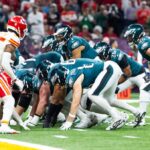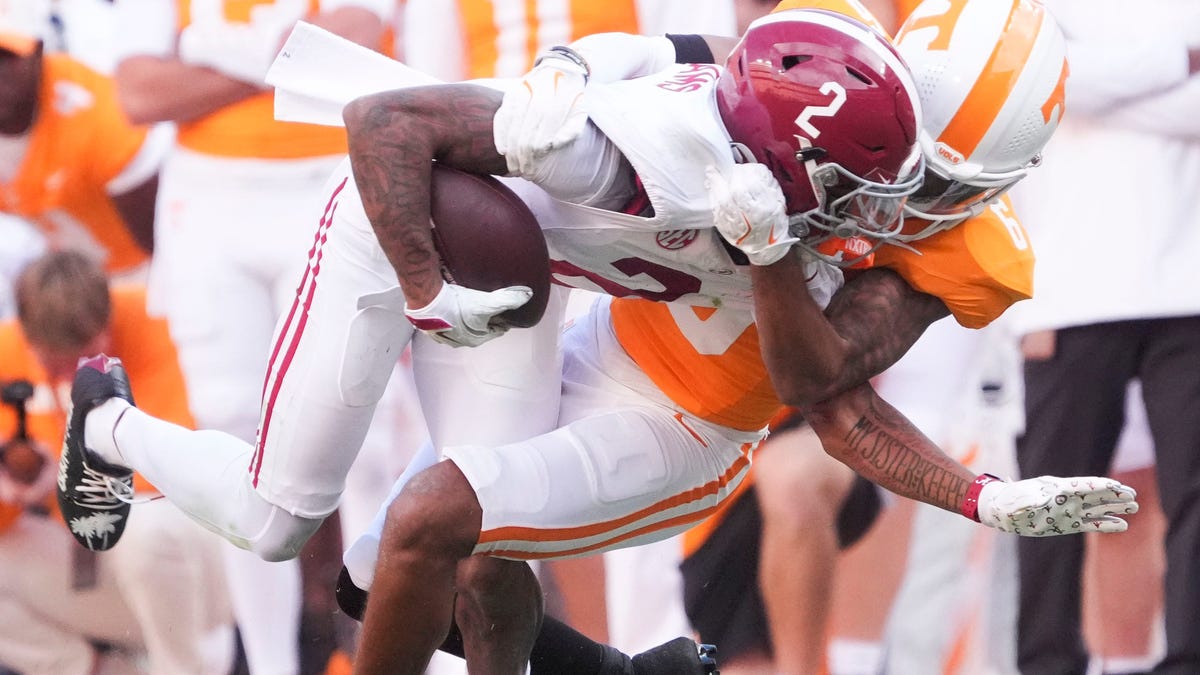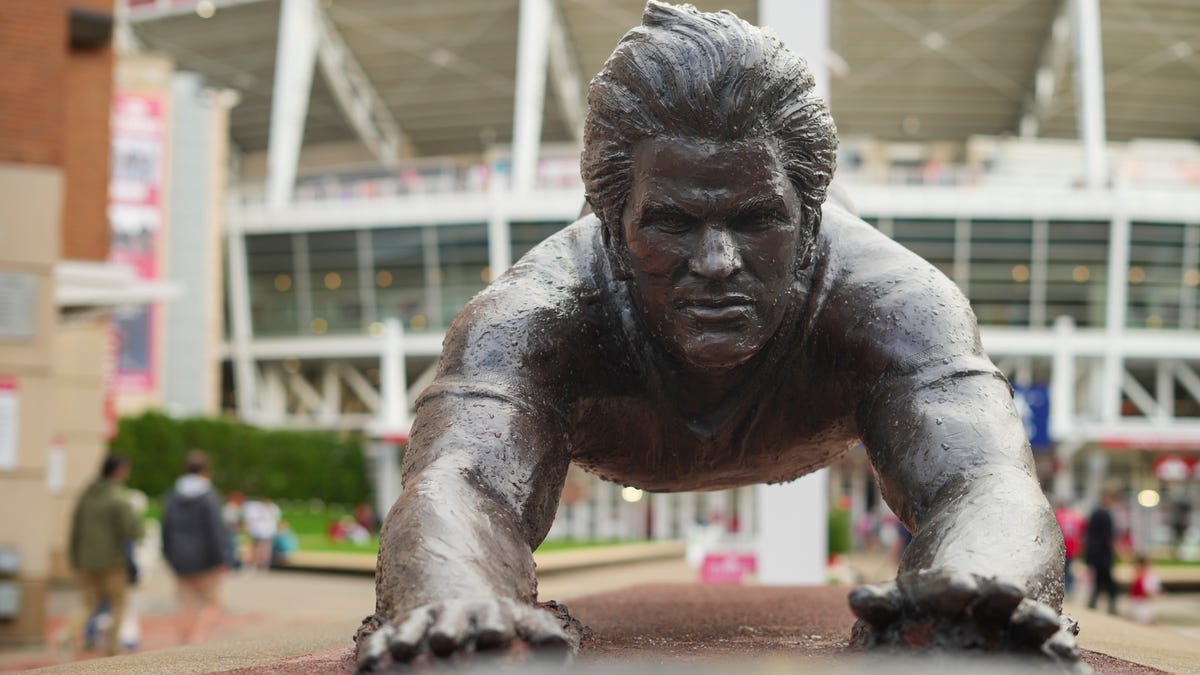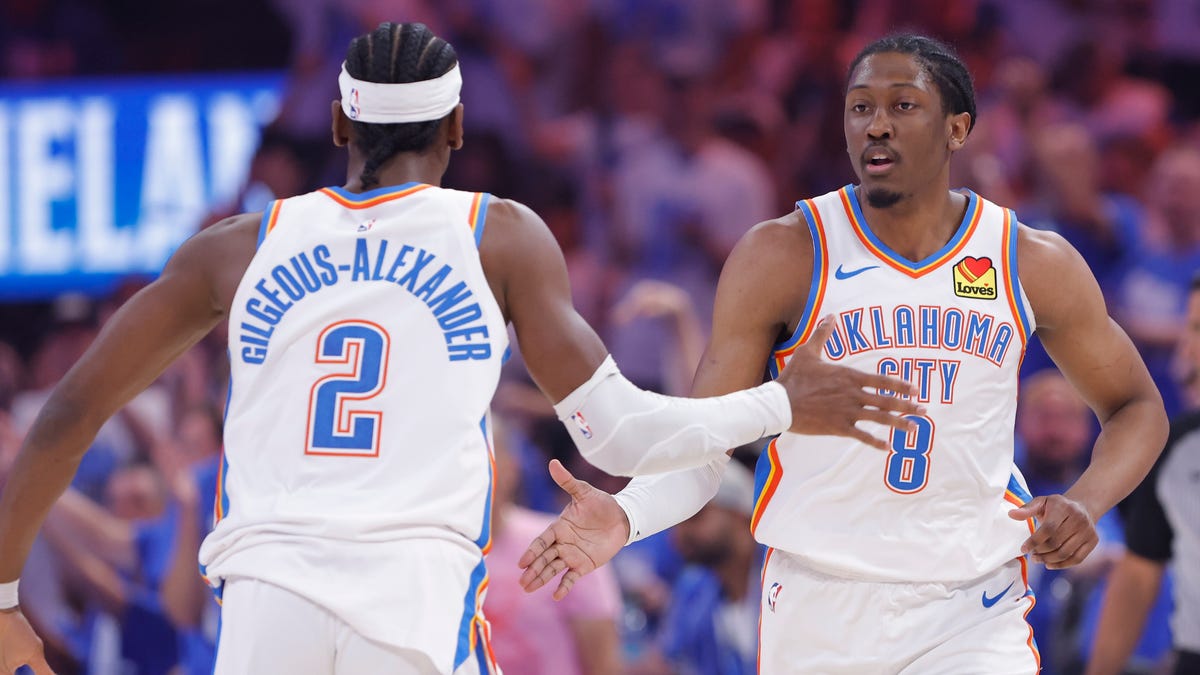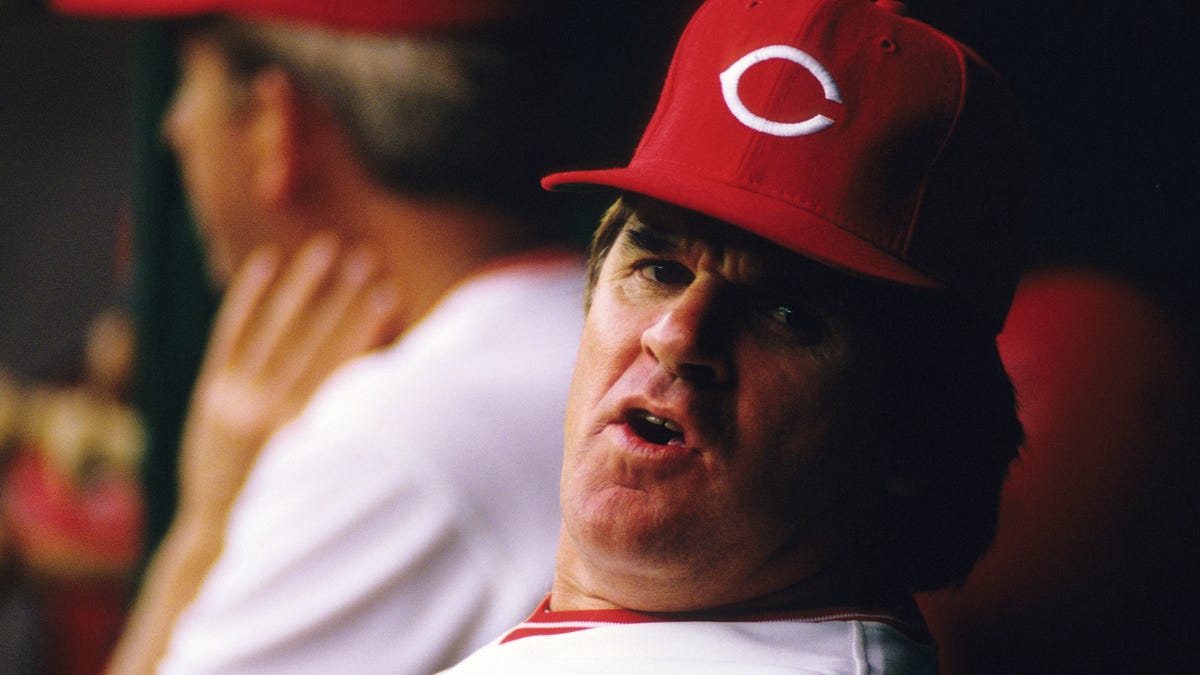Alabama honors Nick Saban by naming Bryant-Denny field after former coach
Alabama honors Nick Saban by naming Bryant-Denny field after former coach
- College sports fans and donors as much power and influence as ever in NIL era that began in 2021.
- Old model of college sports featuring unpaid athletes is not returning, but more evolution awaits.
- Fans and boosters enjoyed agency in NIL era. Their donations set the market rate.
You’re going to miss this era of college sports, because at least a portion of this so-called “chaos” excites you. It entertains you. It empowered you, the fan.
You’re going to miss this unregulated, unencumbered and ever so slightly unhinged era of college sports. You’ll miss that the absence of “guardrails” meant enjoying the freedom to crank the speedometer as high as you can take it.
You’re going to miss that this era of college sports granted you, the fans, the most influence you’ve ever possessed.
Your dollars determined the market rate. How much you donated (or didn’t donate) dictated a roster’s payroll. You had a seat in the clown car. Heck, you might have been driving it. If your team won big, you could take pride in knowing you (and maybe a few millionaire and billionaire donors whom you don’t know) contributed to that success.
Maybe you think your team’s quarterback or slot receiver is overpaid, but, your dollars allowed for that payday. If the product stinks, you can snap your wallet shut and withhold NIL donations until the university brass triggers a coaching change.
If you didn’t pony up a single NIL donation and just wanted to watch the games, well, you enjoyed that freedom. Contributing to NIL is entirely optional.
More change is coming within college sports. I don’t know what shape this next system will take, only that it will be different. I’m skeptical fans will retain as much agency as they’ve had these past few years.
BEST OF BEST: Our ranking of college football’s top 25 coaches
RE-RANK: Texas leads college football NCAA 1-136 after spring
Fans, donors took the wheel of NIL era of college sports
Coaches depended on you to fund their roster, but you weren’t obligated to fork over the cash. You controlled the power of the purse.
What does this power look like in action? Consider LSU this offseason. The school’s donors and fans increased their giving these past several months. For return on that investment, coach Brian Kelly assembled the nation’s top-ranked transfer class. Now, the Tigers look more like a playoff team, maybe even a national championship contender. That’s the byproduct of a fan and donor base working to achieve a common goal.
No longer must you depend on the ball coach being an ace recruiter (or good at sliding money under the table in a fast-food bag). Now, fan dollars gathered above the table facilitate roster assembly.
The NCAA’s former system of unpaid athletes isn’t returning, no matter how much reminiscing occurs. The courts deemed that old model illegal and smashed it to bits. Whatever’s next won’t look like 2020, but not like 2024, either.
NIL an optional fan expense; revenue-sharing will be more direct
Athlete empowerment irks a certain portion of College Sports Inc., and coaches understandably crave more roster control, but their grievances don’t end there. They disliked ceding control to third-party collectives. These NIL groups, bankrolled and operated by donors and fans, became college football’s lifeblood these past few years. Coaches and administrators would like nothing more than to tamp down fans’ power while still collecting their cash.
Schools are trying to bring the NIL operation in house and take control of dispensing your dollars.
Revenue-sharing awaits around the bend. That amounts to new expenses. If you think any serious administrative belt-tightening will occur to offset those costs, well, I’ve got a property in Illinois to sell you with a mountain view. Expect at least some of the revenue-sharing costs to be passed to fans. NIL donations were optional. Revenue sharing will be a more direct expense passed on in the form of ticket-price hikes. Athletic directors can dress up these price hikes by dubbing them “talent fees,” but no matter what they call it, this shifts more direct financial burden onto fans, even if your power decreases.
Off in the distance, federal bureaucrats sniff around the hen house. College sports leaders keep begging Congress to provide government regulations that rein in athlete freedoms and dial down the influence fans and donors enjoy in this current landscape.
I won’t try to convince you everything went perfectly these past few years. Stanford being in the same conference as Florida State will never make sense. It’s probably not ideal that athletes can transfer an unlimited number of times without penalty, either.
Overall, though, I wonder whether fans might someday look back on these past few years as the good ol’ days that were underappreciated in the moment.
Coaches, administrators and conference commissioners insist unfettered athlete freedoms, paired with unprecedented fan and donor influence, produced “chaos.” They called it the Wild, Wild West. I see it differently. Maybe, College Sports Inc. just couldn’t stand that you, the fans and donors, became the sheriff in town.
Blake Toppmeyer is the USA TODAY Network’s national college football columnist. Email him at BToppmeyer@gannett.com. Follow him on X @btoppmeyer.




